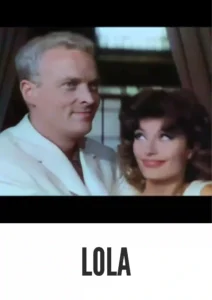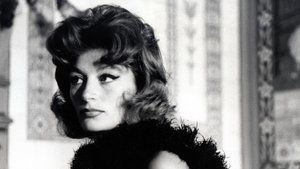Contact: [email protected]
Video Sources 0 Views
Synopsis
Lola 1961: A Timeless Tale of Love and Loss in Early Color

Introduction
In the vast landscape of classic cinema, Lola 1961 stands as a poignant exploration of love, ambition, and the human spirit. Directed by Jacques Demy, this cinematic gem weaves a captivating narrative set against the backdrop of a bustling French port town. However, what sets Lola 1961 apart is its early colored version, which adds a new dimension to the film’s visual storytelling. In this article, we delve into the profound impact of colorization on the viewing experience of Lola 1961, examining its historical significance, cinematic legacy, and enduring appeal.
Check The Full Colorized Movies List
Check Our Colorized Movies Trailer Channel
Understanding Lola 1961: Director, Cast, and Genre
Jacques Demy’s visionary approach to storytelling shines brightly in Lola 1961, a film that captures the essence of post-war France with elegance and grace. At the heart of the story is Anouk Aimée’s captivating performance as Lola, a cabaret singer whose search for love leads her down a path of heartache and redemption. Set against the backdrop of the picturesque port town of Nantes, Lola 1961 explores themes of longing, regret, and the passage of time, firmly establishing itself as a quintessential French drama.
Demy’s direction imbues Lola 1961 with a sense of poetic realism, blending elements of musical theater with classic French cinema to create a cinematic experience unlike any other. From the vibrant streets of Nantes to the intimate cabarets where Lola performs, Demy’s meticulous attention to detail brings the world of Lola 1961 to life with breathtaking beauty and authenticity.
Exploring the World of Lola: Plot and Characters
Lola 1961 follows the intersecting lives of several characters, each grappling with their own desires and disappointments. At the center of the story is Lola, a free-spirited cabaret singer who dreams of finding true love. As she navigates the complexities of romance and ambition, Lola finds herself drawn to a series of men, each offering a glimpse of happiness amidst the chaos of post-war France.
Alongside Lola are a cast of memorable characters, including Roland, an American sailor searching for his long-lost love, and Michel, a disillusioned car mechanic with dreams of a better life. As their paths converge and diverge, Lola 1961 paints a vivid portrait of love in all its forms, from fleeting passion to enduring devotion.
The Art of Film Colorization
Film colorization has long been a contentious topic in the world of cinema, with purists arguing that it alters the artistic vision of the original filmmakers. However, when done tastefully and with respect for the source material, colorization can enhance the viewing experience, breathing new life into classic films for modern audiences.
The process of colorization involves digitally painting each frame of a black and white film to simulate the appearance of color. While early attempts at colorization were crude and often criticized for their lack of fidelity to the original film, advances in technology have allowed for more sophisticated techniques that preserve the integrity of the source material while enhancing its visual appeal.
Early Colored Films: A Brief History
The practice of colorizing films dates back to the early days of cinema, with filmmakers experimenting with various techniques to add color to black and white footage. From hand-tinting individual frames to the development of digital colorization, the process has evolved significantly over the years, offering filmmakers new ways to express their creativity and connect with audiences.
Despite the initial skepticism, early colored versions of beloved classics such as Casablanca and Gone with the Wind found success with modern audiences, sparking renewed interest in these timeless tales.
Lola 1961 and Its Early Colored Version
In a bold move, Lola 1961 was released in an early colored version, offering audiences a fresh perspective on Demy’s classic tale of love and longing. The decision to add color to the film was met with both excitement and skepticism, with purists fearing that it would detract from the film’s nostalgic charm. However, the early colored version of Lola proved to be a revelation, enhancing the film’s visual appeal while staying true to its timeless spirit.
The Debate Over Film Colorization
The debate over film colorization continues to rage on, with proponents arguing that it revitalizes classic films for modern audiences, while detractors insist that it diminishes the integrity of the original work. As technology advances and new techniques emerge, the line between preservation and innovation becomes increasingly blurred, leaving audiences to grapple with questions of authenticity and artistic intent.
Examining Lola 1961 as an Early Colored Film
Viewing Lola 1961 in its early colored iteration offers a new perspective on Demy’s masterful storytelling. While purists may prefer the film’s classic black and white version, the addition of color breathes new life into the film, enhancing its visual richness and emotional depth. Whether experienced in vibrant color or stark monochrome, Lola 1961 remains a timeless testament to the power of love and the human spirit.
The early colored version of Lola 1961 invites audiences to rediscover Demy’s timeless tale of love and longing in a whole new light. By reimagining the film’s iconic imagery in vibrant hues, colorization breathes new life into the classic French drama, offering a fresh perspective on one of cinema’s most beloved classics.
Influence and Legacy: Lola’s Impact on Cinema
- Lola 1961 * has left an indelible mark on the world of cinema, inspiring countless filmmakers and reshaping the cinematic landscape. Demy’s innovative approach to storytelling and visual storytelling has influenced generations of filmmakers, leaving behind a legacy that continues to resonate with audiences around the world.
Demy’s Cinematic Legacy: Beyond Lola
While * Lola 1961 * stands as a crowning achievement in Demy’s illustrious career, its legacy is just a small part of his enduring impact on world cinema. From sweeping musicals to intimate character studies, Demy’s films continue to captivate audiences with their timeless themes and universal appeal, cementing his status as one of cinema’s greatest auteurs.
Themes Explored in Lola 1961
At its core, * Lola 1961 * is a meditation on the nature of love, longing, and the passage of time. Through its evocative imagery and poignant storytelling, the film explores the complexities of human relationships, capturing the joy, heartache, and resilience that define the human experience.
Reception and Controversy Surrounding Lola 1961
Upon its release, * Lola 1961 * received widespread acclaim for its innovative storytelling and stunning visuals. However, the decision to release the film in a colorized format sparked controversy among purists and scholars, reigniting the debate over the preservation of cinematic heritage. Despite the initial backlash, the early colored version of * Lola * found a new audience, introducing Demy’s timeless tale to a new generation of viewers.
Where to Watch Lola 1961 Online
For those eager to experience the timeless brilliance of * Lola 1961 *, the film is readily available on popular streaming platforms, ensuring that audiences old and new can immerse themselves in Demy’s cinematic masterpiece with ease.
FAQs About Lola 1961
For curious cinephiles seeking answers to burning questions about * Lola 1961 *, we’ve compiled a list of frequently asked questions to shed light on the film’s history, production, and enduring legacy.
Conclusion
In conclusion, * Lola 1961 * stands as a timeless testament to the power of love, longing, and the human spirit. Whether viewed in its classic black and white form or its early colored iteration, Demy’s masterpiece continues to inspire and enthrall audiences around the world, reminding us of the enduring power of cinema to capture the beauty and complexity of the human experience. As we reflect on the legacy of * Lola 1961 * and the ongoing debate surrounding film colorization, let us celebrate the timeless artistry of Jacques Demy and the enduring appeal of one of cinema’s most beloved classics.











